Paprika

A mildly sweet or mildly pungent spice in powdered form is Paprika (Capsicum annuum). All varieties of paprika used for the preparation of ground spices belong to the genus of chili pepper, of the nightshade family.
The color intensity of wigs varies from yellow to red-brown. Hotness depends on the proportion of seeds and partitions in the powder, which contain the alkaloid capsaicin.
Titles in other languages:
- German Peperoni, Roter Piment;
- English Red pepper, Hungarian pepper;
- fr. Paprika, piment rouge.

Appearance
The spice is made from capsicum, using only ripe, rich red specimens. These are hollow, multi-seeded, oblong, often straight fruits. Their length is varied and can reach up to 25 centimeters.
- The plant itself is an upright shrub, mostly grown as an annual crop. In height can be from 20 to 150 cm.
- The leaves are wide, solitary or collected in a rosette. Their shape depends on the variety: ovoid, or oval with a pointed end.
- Flowering lasts several weeks. Flowers white hanging, axillary.
- Young fruits are green.
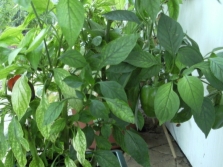


Kinds
There are dozens of varieties of this spice. All of them differ in aroma, color and degree of sharpness. But only a few stand out among them:
Delicious Paprika
Mild, intense red color, strongly staining. Taste is sweet and fruity.

sweet paprika
A more sought-after look, with a pleasant spicy spiciness.Intense red color, with a strong, warm smell and a mild fruity flavor similar to bell pepper.
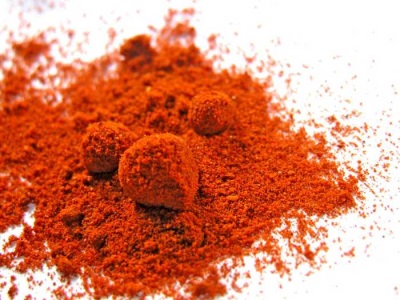
pink paprika
Red-brown or dark red hot spice with a medium grind. The aroma is warm, spicy. Used in small quantities.

Other types of seasoning have minor differences. For example, semi-sweet, special and tender - do not have sharpness, but the shades of red are slightly different. Stands out among them acute paprika, the color of which is yellowish-brown, and the taste is scorchingly spicy.

Where does it grow
Paprika is native to South America. It was believed that the Hungarians were the discoverers of this spice, but it came to them only at the end of the 16th century. First planted as an ornamental plant. Later, the fruits began to be gradually used by the poor as a substitute for pepper, and in the 18th century they already gained their popularity in cooking.
Currently, pepper is cultivated mainly in Hungary, but also in Brazil, Spain and the United States. But still, most of the paprika is supplied to the shelves by the Hungarians.

spice making method
For commercial purposes, paprika is grown on an industrial scale. From planting to full ripening of pepper takes 4-5 months. Harvesting is done by hand, piece by piece, in several stages, since the fruits do not ripen at the same time. The harvested crop is laid out and dried under the sun. For complete drying, slightly dried peppers are strung on threads and left to dry in a suspended state (in the form of original garlands). Then the fruits are ground into powder along with seeds and partitions, while obtaining a spicy red seasoning. If the insides are removed, the taste will be soft, sweetish, almost without sharpness.The spice is sold in packages of various sizes, jars, tubes. When choosing this seasoning, remember that the bright, non-dull color of the product indicates its good quality.



This spice can be prepared independently. For sweet paprika, red bell pepper is perfect. After removing the seeds and core, dry it well. Dry can be used in the form of small pieces, or pounded in a mortar. Store for six months only in a dark, dry place and always in an airtight container. A dirty brown color indicates that the spice has become unusable.

Peculiarities
- The taste of dried spices is sweetish with bitterness.
- In the process of cooking, it gives the dishes a reddish tint and improves their taste.
- The spice cannot be cooked over high heat due to the high sugar content, otherwise it will burn.

Nutritional value and calories
For 100 grams of paprika:
| Squirrels | Fats | Carbohydrates | calories |
| 14.14 grams | 12.89 grams | 53.99 grams | 282 kcal |
Chemical composition
Vitamins: A, E, K, C,
- choline,
- thiamine(B1),
- riboflavin(B2),
- pyridoxine(B6),
- pantothenic acid(B5).
Trace elements:
- zinc, selenium,
- copper, manganese,
- iron, phosphorus,
- sodium, magnesium,
- calcium, potassium.
Other useful substances: ash, water, dietary fiber, fatty oils, capsaicin, carotene.

Beneficial features
- Tonic
- antiseptic
- Antibacterial
- Painkiller
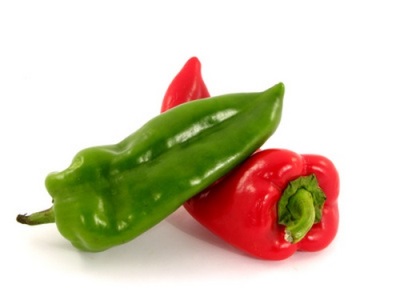
Contraindications
Despite the rich content of various trace elements in pepper, it is not suitable for everyone. Someone needs to significantly reduce its consumption, and some completely eliminate it from their diet. It is worth being careful who has the following diseases:
- arrhythmia,
- insomnia,
- cholecystitis,
- hypertension,
- pancreatitis,
- ulcerative colitis,
- chronic hemorrhoids,
- diseases of the liver and kidneys,
- cardiac ischemia,
- gastritis with high acidity,
- peptic ulcer of the stomach and duodenum.
Individual intolerance should also be taken into account.
Application
In cooking
Paprika of varying degrees of spiciness has long been loved and is constantly used by cuisines around the world. First of all Hungarian and Bulgarian. It is also in demand in Asian cuisine, in Germany, Spain, Mexico, Portugal. It is used not only by housewives, but also by professional chefs and manufacturing companies. The list of uses is quite wide:
- suitable for many soups, sauces, ketchups, marinades;
- goes well with all meat dishes;
- gives a piquant taste to vegetable side dishes;
- you can season fish and seafood;
- added to some types of cheeses and salads;
- used as a dye in the production of meat products;
- goes well with many spices: garlic, coriander, basil, nutmeg, parsley, dill.
One teaspoon of paprika = 3.5 gr.
One tablespoon = 14 gr.



We offer several recipes for dishes with this spice.
Bograch
This is a long cooking dish - about 9 hours. You will need a large pork leg for this. We put it in a bulk dish and pour 5 liters of cold water. Cook like jelly for five hours. We filter the broth and cook in it for about four hours with veal and pork belly, each one kilogram.
In the meantime, prepare the vegetables: do not finely chop the onion, carrot, parsley root, red sweet and hot peppers (2 of each ingredient). Fry in a pan until golden brown. Separately, cut 5 potatoes and 4 tomatoes without skins. Dip everything in the finished broth, season with paprika and salt to your taste.Cook vegetables until tender. We use only hot.
Ideally, the dish is cooked over a fire in a large cauldron.

Hungarian chicken
The first step is to fry the finely chopped brisket. When all the fat is rendered, add one chopped onion and cook until browned. Sprinkle everything with one teaspoon of sweet paprika and put a small chicken into this mixture, cut into several pieces. You need to stew the bird on low heat under the lid for about an hour. For juiciness, at the end of cooking, add one tablespoon of sour cream. The dish goes well with vegetables, dumplings, rice.
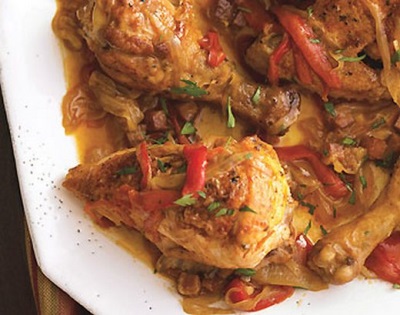
stuffed peppers
You will need straight pods of paprika, washed and peeled, in the amount for how many people you are cooking. We blanch them for several minutes and let the liquid drain, stuff them with a mixture of not coarsely chopped tomatoes and eggs (1: 1). We set the peppers in a heat-resistant dish greased with oil, pour a little broth in which the peppers were blanched. Sprinkle with grated cheese and send to the oven for 20-25 minutes. Peppers are served by setting them on toast. You can also sprinkle with cheese if you like.
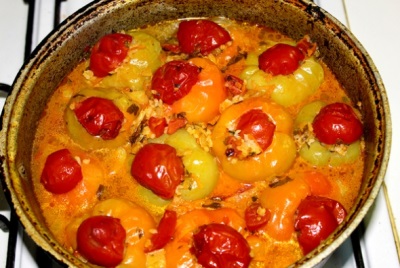
fried peppers
For the dish you will need paprika of sweet varieties, in the amount that you need. We wash and remove the inside of the peppers, cutting them lengthwise into 4-6 parts. We heat the fat in a tall bowl and fry, dipping each piece in the omelette dough. Serve lightly sprinkled with lemon juice.
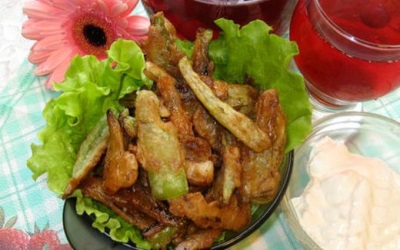
See below for details.
In medicine
Paprika won its far from the last place in medical practice.
- It has a good effect on brain activity.
- Helps with colds.
- It relieves joint pain.
- Stops dysentery.
- Improves blood circulation.
- Normalizes the work of the digestive tract.
- Strengthens immunity.
- Increases energy.
- Stimulates appetite.

When losing weight
Hot paprika varieties are successfully used for weight loss. It strongly stimulates the digestive system and significantly accelerates heat transfer. In its pure form, it is not consumed, but added to various dishes and drinks, which contribute to fat burning.
Also, for weight loss, patches based on this spice are used. There are also tablets with its extract on sale.
In addition, paprika essential oil is relevant. It is added to a variety of cosmetic products that correct the figure. This is due to the fact that pepper extract activates the blood circulation of problem areas, accelerating the process of splitting subcutaneous fat.
Such creams fight cellulite well and tighten the skin, in this case wraps will be effective. They remove excess fluid from the body and reduce body volume.

There are several recipes for body wraps and at home (be sure to check mixtures for sensitivity, a slight burning sensation is normal).
With coffee
Make a mixture of natural coffee, salt, red and black pepper (each 1 tsp). Add 40% alcohol to the consistency of liquid sour cream. Spread problem areas, wrap with cling film. Wrap up warmly for twenty minutes.
fruity
You will need 200 ml of fruit puree (any fruit is used). We add two st. l. kefir and one tbsp. hot spices. The procedure takes no more than twenty minutes.
With honey
Mix 50 grams of ground coffee and honey, adding 4 gr. paprika. Apply and insulate for 15 minutes.
With essential oils
For 50 ml of base (any oil), 2 drops of lemon (or grapefruit) EO, one tablespoon of cinnamon and paprika. Turn around for twenty minutes.

Please note that with varicose veins, wraps with insulation are contraindicated.And those who suffer from hypertension, diseases of the heart and blood vessels, it is better to completely abandon this type of procedure.
cultivation
Paprika is mainly cultivated in temperate continental climates. With a strong desire, you can grow it in your greenhouse. The market does not offer a very large selection of plant seeds. Usually these are varieties that produce cube-shaped or conical fruits.
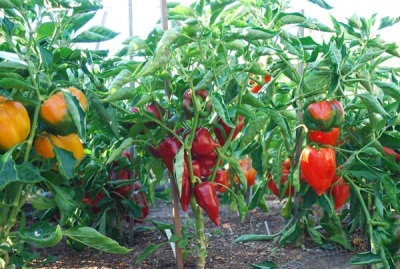
Seedling
Peppers are planted with seeds in early March. This is a fairly thermophilic plant, so the temperature should be from 24 to 28 degrees. Too high a temperature will aggravate germination. Picking is done as soon as two true leaves appear. For this, small containers 5x5 cm in size are enough. It is good to highlight the seedlings so that their daylight hours are 12 hours. Watering should be regular and uniform, this will allow the seedlings not to stretch.

Seedling transplant
When 5-6 new leaves appear, young plants can be planted in the ground.
This is best done in mid-May, when the soil is warm and its temperature is 15 degrees and above. Therefore, a week before planting, cover the soil with plastic wrap, provided that the weather continues to be sunny.
The distance between seedlings is 30-40 centimeters. The optimum temperature regime (for good growth) is 20-26 degrees. Humidity should be 60-75%. The growing season lasts up to 60 days.

Care
So that there is no fall of flowers, rudiments and fruits do not crack, regularly, but moderately moisten the soil.
Abundant watering is detrimental to paprika.
Feed seedlings of peppers, like tomatoes, but with a large amount of potassium and calcium (in a ratio of 0.5: 1) so that dry rot does not form.

Interesting Facts
In Hungary, this red spice is highly valued and simply adored. It is part of most Hungarian dishes. The most famous are chicken paprikash, Hungarian goulash, lecho. In the small town of Kaloccha there is a museum where you can find out the most intimate details in the history of growing and processing paprika.
It is known that Hungarians eat up to five hundred grams of this product per year (per person). In the south-east of Europe, this spice is consumed a little less - two hundred grams. In Germany - up to one hundred grams per person.
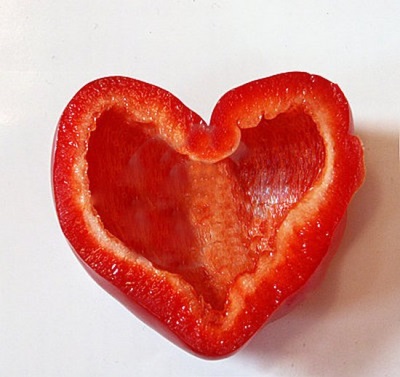


















I love cheese with paprika! And, as it turned out, not in vain)